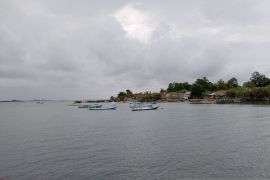Since the end of 2019 or the start of 2020 La Nina, Indonesia has experienced higher rain intensity and frequency, Acting Head of Disaster Data, Information, and Communication Center at BNPB Abdul Muhari stated.
This has caused shorter periods of days without rain in regions that earlier had longer period of days without rain, he noted during the Disaster Briefing online event on Monday.
Environmental factors also contribute to the anomaly. The high frequency of land use change causes the global temperature to rise.
On the local scale, the impact of this will be felt within the next 10-15 years, Muhari stated.
The impact was apparent in the form of the flood that occurred in Sintang, West Kalimantan, and Katingan, Central Kalimantan, for two years in a row.
Looking back, within the last 10 years, these two areas rarely experience flood. Climate change causes the frequency of floods in the two districts to increase and expand.
Related news: BNPB deploys helicopter to mitigate forest, land fires in S Kalimantan
Moreover, the impact of climate change causes flooding as well as forest and land fires to occur at the same time. This incident occurs in Aceh, Riau, West Kalimantan, and Central Kalimantan, he highlighted.
For instance, the incidents of flooding and fire occurring at the same time in Sintang and Katingan.
"The two contrasting phenomena, water and heat, water and fire, occur at the same time at locations not too far from each other," he remarked.
"I call this as the impact of climate change at the local level," he stated.
The disaster phenomenon, due to the impacts of climate change in the last three years, has become a cause for concern for the agency and stakeholders in regions.
Related news: Residents flee homes after earthquake hits Mentawai Islands: BPBD
Translator: Devi Nindy S R, Fadhli Ruhman
Editor: Rahmad Nasution
Copyright © ANTARA 2022












